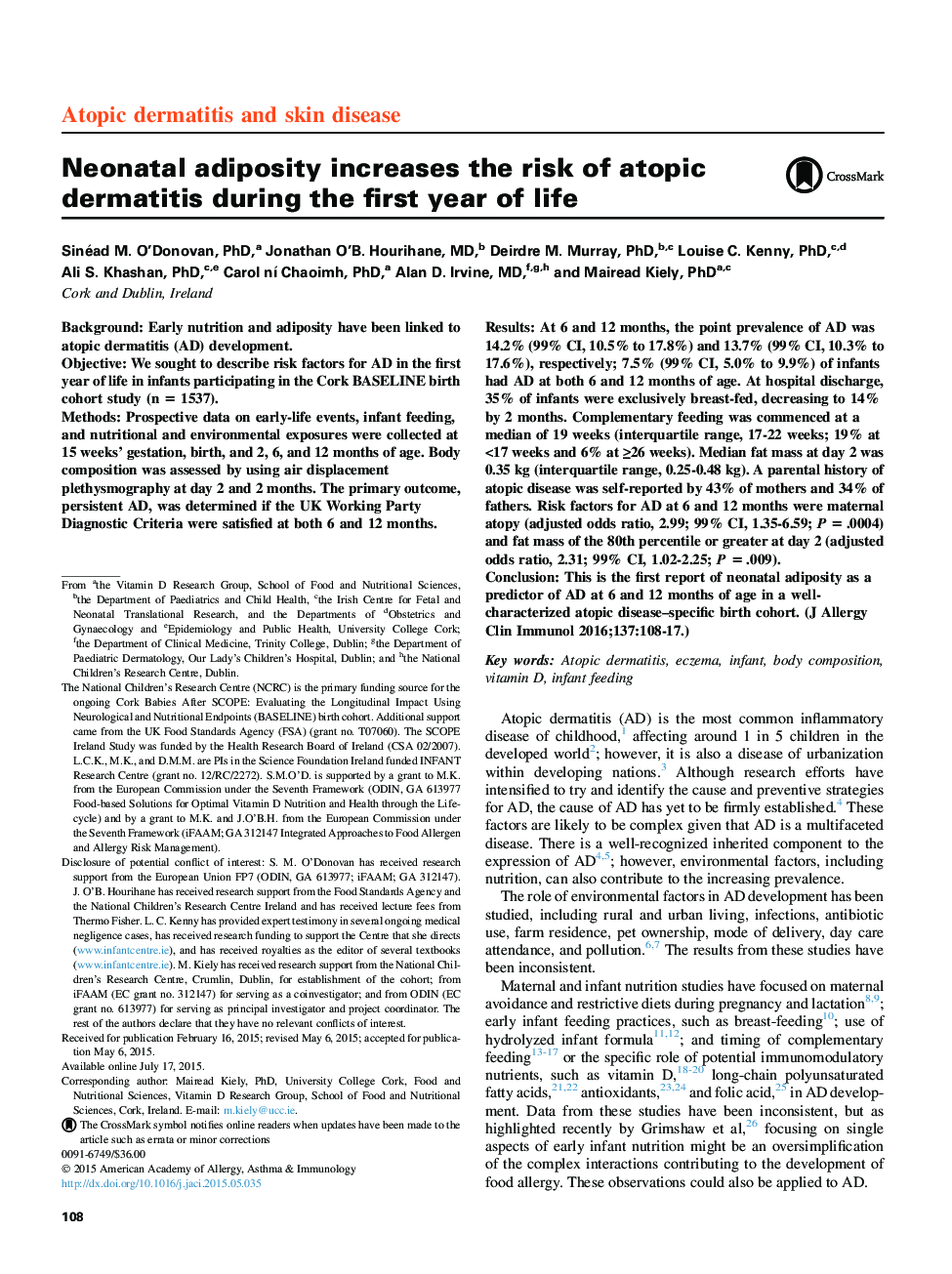| Article ID | Journal | Published Year | Pages | File Type |
|---|---|---|---|---|
| 6062838 | Journal of Allergy and Clinical Immunology | 2016 | 10 Pages |
BackgroundEarly nutrition and adiposity have been linked to atopic dermatitis (AD) development.ObjectiveWe sought to describe risk factors for AD in the first year of life in infants participating in the Cork BASELINE birth cohort study (n = 1537).MethodsProspective data on early-life events, infant feeding, and nutritional and environmental exposures were collected at 15 weeks' gestation, birth, and 2, 6, and 12 months of age. Body composition was assessed by using air displacement plethysmography at day 2 and 2 months. The primary outcome, persistent AD, was determined if the UK Working Party Diagnostic Criteria were satisfied at both 6 and 12 months.ResultsAt 6 and 12 months, the point prevalence of AD was 14.2% (99% CI, 10.5% to 17.8%) and 13.7% (99% CI, 10.3% to 17.6%), respectively; 7.5% (99% CI, 5.0% to 9.9%) of infants had AD at both 6 and 12 months of age. At hospital discharge, 35% of infants were exclusively breast-fed, decreasing to 14% by 2 months. Complementary feeding was commenced at a median of 19 weeks (interquartile range, 17-22 weeks; 19% at <17 weeks and 6% at â¥26 weeks). Median fat mass at day 2 was 0.35 kg (interquartile range, 0.25-0.48 kg). A parental history of atopic disease was self-reported by 43% of mothers and 34% of fathers. Risk factors for AD at 6 and 12 months were maternal atopy (adjusted odds ratio, 2.99; 99% CI, 1.35-6.59; P = .0004) and fat mass of the 80th percentile or greater at day 2 (adjusted odds ratio, 2.31; 99% CI, 1.02-2.25; P = .009).ConclusionThis is the first report of neonatal adiposity as a predictor of AD at 6 and 12 months of age in a well-characterized atopic disease-specific birth cohort.
